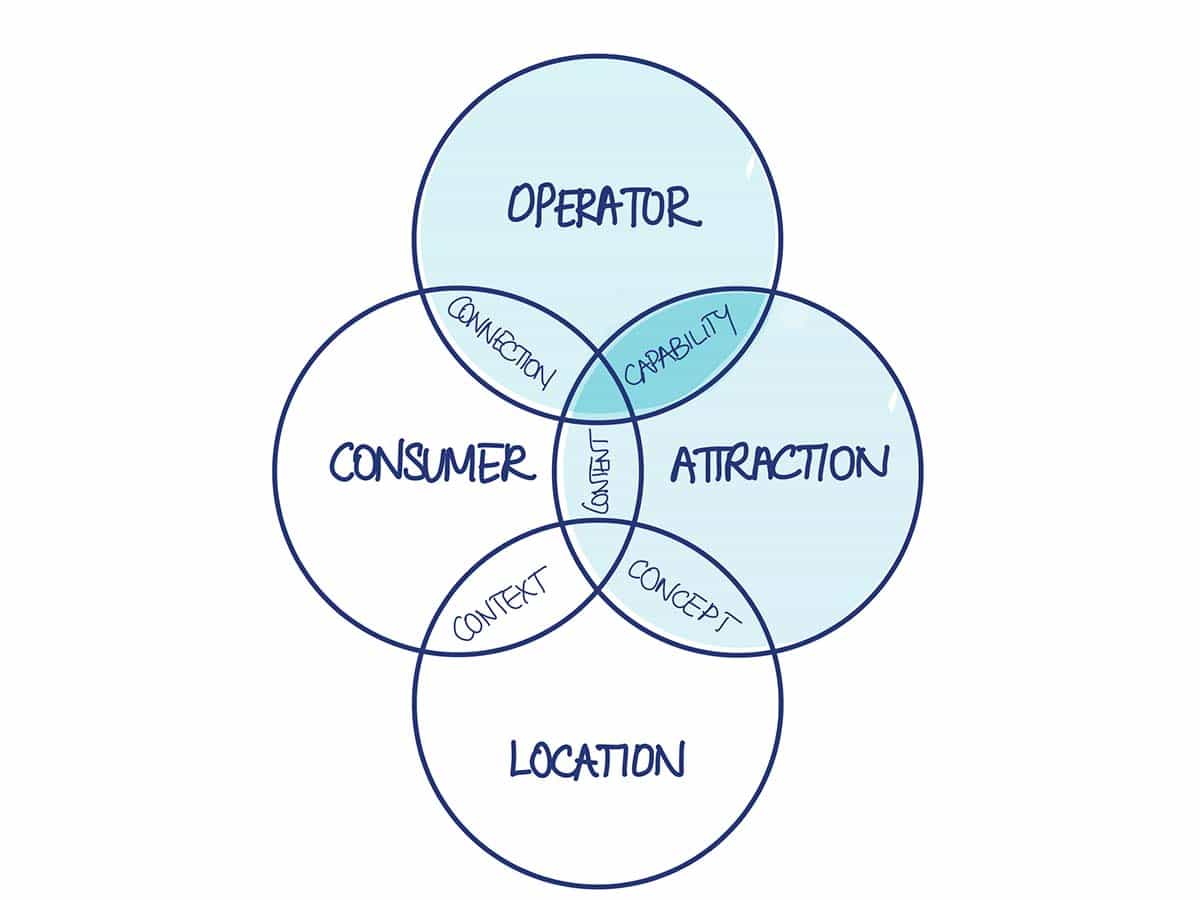
There are four areas of consideration when looking at a VR attraction for your business. Last week, I wrote about how your experience, mindsets, and vision can help inform your selection of the perfect VR attraction. That post was about you, the operator. In the coming weeks, I will be writing about your customers and your venue. This week let’s talk about the attraction itself.
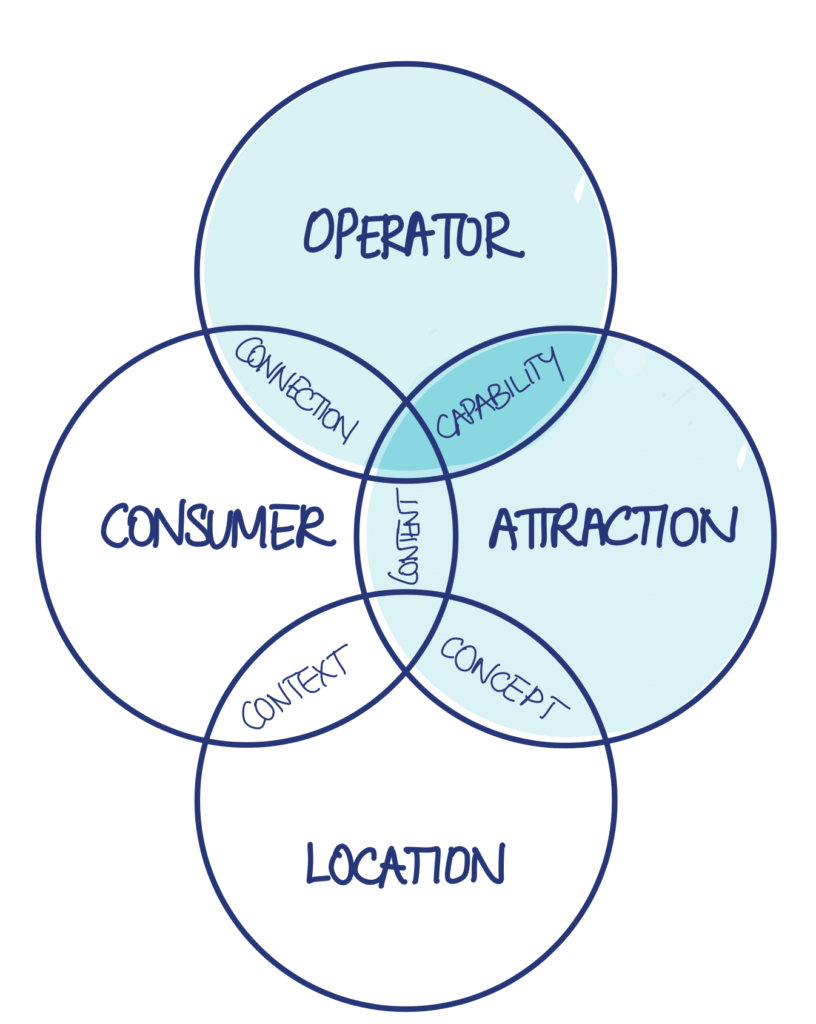
When operators consider adding a VR attraction to their product mix, it can seem overwhelming, so let’s break it down. While there are lots of ways to segment a market, and there is no right or wrong, here are the broad product categories I use when thinking about VR solutions:
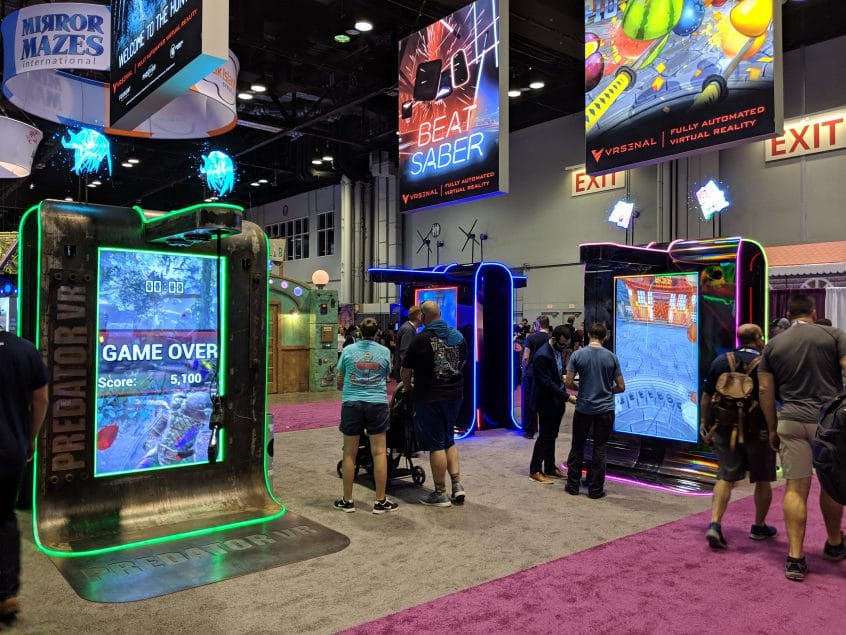
At the low end is the store-bought HTC Vive in a 10×10 foot room. At the high end are commercial products like Raydon’s Total Recoil and VRsenal’s versions of Fruit Ninja and Beat Saber, both unveiled at IAAPA last year. The price range goes from $5K for a do-it-yourself Vive booth to $35K for a deluxe arcade cabinet. But the player experience is the same. You have replaced the LCD monitor from a traditional arcade game with a 3D head-mounted display (HMD), or VR goggles as some people call them. This makes the experience more immersive, more believable, and often more fun for the player.

This category includes products like Hologate, Chaos Jump, Omniverse VR Arena, Quest Arena, WePLayVR, X-Arc, and the newest entrant, BoxBlaster, which are generally for 4-players in a small enclosure (less than 400 square feet). Players can either be tethered to the computer or can wear a backpack PC.
There are a few systems, like YDreams’ Arcave VR Studios’ Atom, that leverage wireless transmission of the video signal, but for now, those are limited to 3-players until the FCC approves a 4th channel on the wireless spectrum. Virtuix takes a unique approach with their Omni Arena combining “running” on a treadmill with esports competitions and social sharing of videos. These games take the immersion of VR and add a social element, which Greenlight Insights reports 70 percent of players surveyed expected in their VR experience.
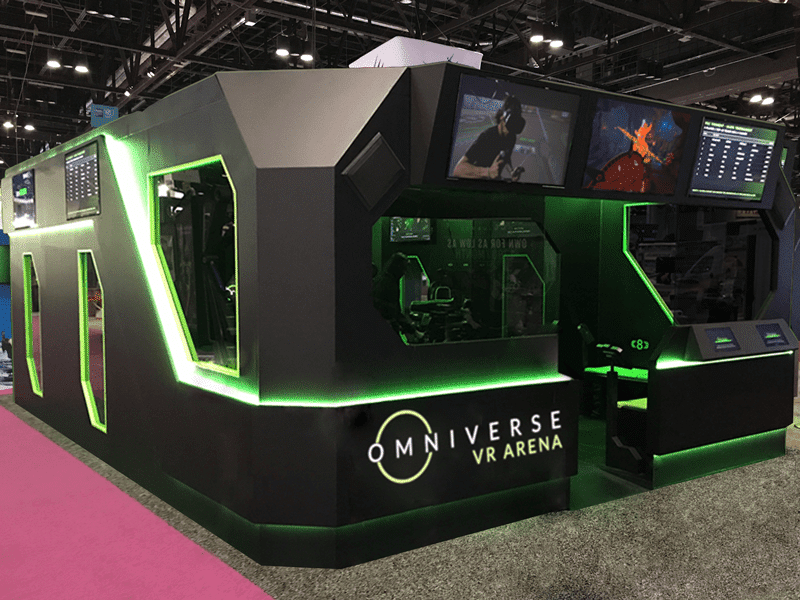
These solutions employ more sophisticated tracking technology and take up much more space. Arena scale setups generally range from 1000 up to 4000 square feet, with between 6 and 20 players inside the experience together. The further a player actually walks in VR, the deeper the immersion, so these experiences are more compelling to the player. Some employ full-body tracking, which can make them highly social, as players can actually touch each other in the real and virtual world. Zero Latency is the leader in this space, but VR Studios, True VR, Mass VR, Neurogaming and about 20 other companies have systems in this category. Most run only first-party software titles, but there is a growing community of indie developers building titles in this category.
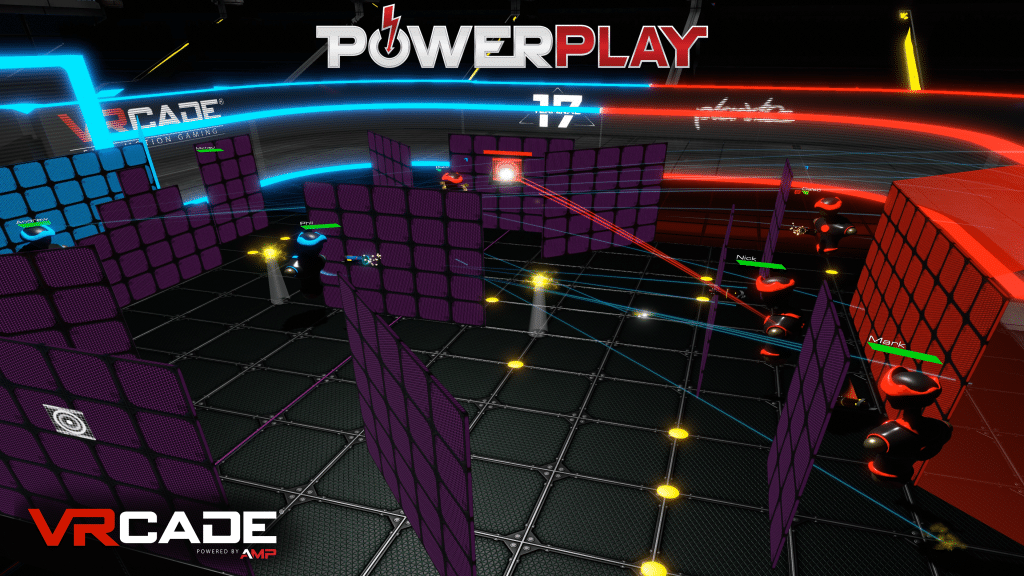
Just a year ago, these systems required expensive camera systems to track players, but the commercialization of inside-out tracking, where the cameras are built into the headsets, has reduced the cost of entry dramatically. Some have also pushed the limits of the Vive trackers to cover bigger spaces. Vertigo Games, makers of the wildly popular Arizona Sunshine games, offers a version for 4 players in 1000 square feet using the out of the box HTC Vive Lighthouse tracking that comes with every headset. Holodeck is combining tracking systems to create more efficient and higher player density attractions, up to 20 players in a space that most others would limit to 8 and is even developing a virtual bumper car system.
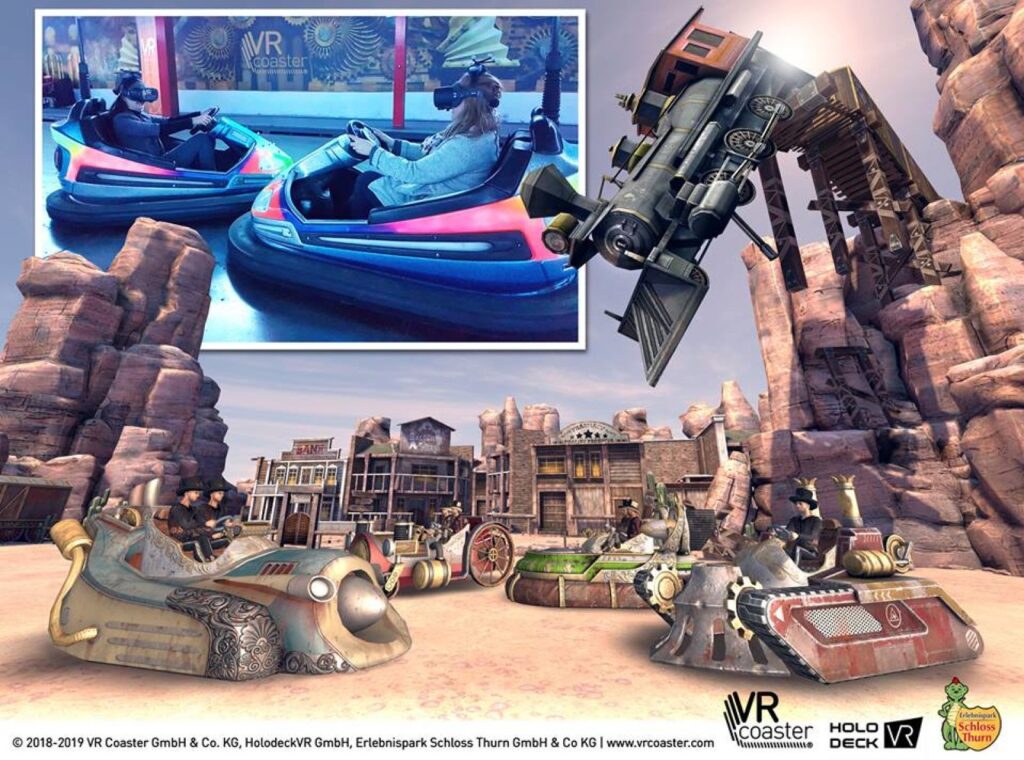
These high-end attractions take the immersion to the ultimate level by adding environmental effects and haptic feedback. The players feel wind, heat, and vibration. Some use scents to make the environments even more believable. At the high-end of this spectrum are solutions like The Void, Nomadic and Dreamscape, and new entrant Tyffon, which map the physical environment to the virtual one, so you can open doors, or even climb into a virtual helicopter and what you feel maps realistically to what you see in VR.
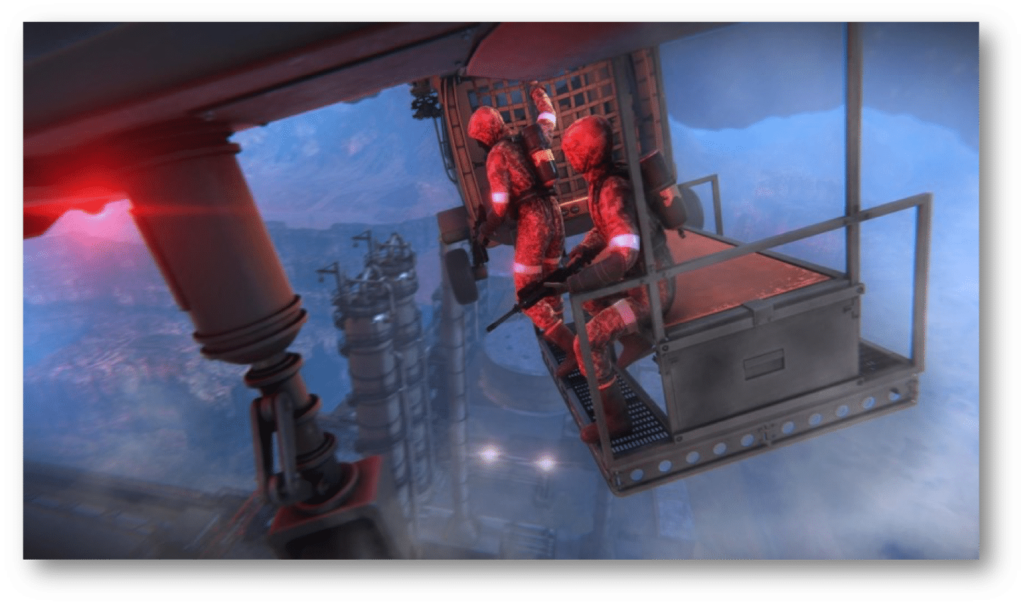
These experiences are shorter, but the multisensory impact enables deep immersion much more quickly. To track physical objects in the space, and to accurately map players in relation to these objects, these systems all use expensive optical tracking systems like those used in motion capture special effects studios. While new technologies are emerging that might bring the costs of these systems down over the next year or two, expect these solutions to stay in the upper levelsof the pricing strata.
There is an emerging category of rapidly growing VR escape room experiences. These are longer, from 30-60 minute experiences, more story driven than most of the shooting games, and contain a combination of puzzles and action. Consumer game behemoth Ubisoft has entered this market via a division called Blue Byte with games in the Assassin’s Creed universe. These are generally room-scale (10×10 foot) HTC Vive booths, with up to four linked for a multiplayer experience. Eclipse from Backlight uses a vibrating floor, but most use the same setup as the Arcade Single or Multiplayer systems.
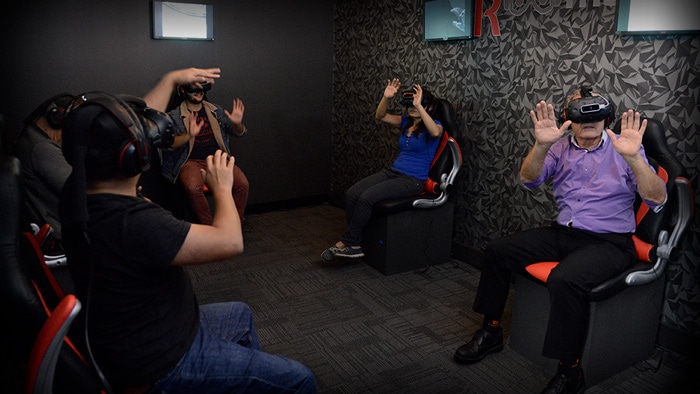
I will be going to the Room Escape show in August with a client launching a new 6-player solution with environmental haptics in a small 170 square foot room. It’s one of the most profitable operating models I have found in the location-based VR market yet. More on that to come next month, but if you want a sneak preview – email me via this link.
The Arena and Multisensory attractions fall into the anchor category, with bowling, laser tag, and other large footprint and expensive attractions. Many players will drive long distances and book sessions in advance to play. The arcade systems are more casual and impulsive, costing less for both the operator and the consumer.
Like in any categorization, there are blurred lines. Vex offers environmental haptics in a multiplayer arcade system. The Omni Arena is showing signs of being an anchor attraction, with 40% of the players visiting specifically to play it at their first test site. Some of the VR escape room games offer action sequences where players shoot like in an arcade game. All things considered; this categorization should help you make better sense of the market as it exists today.
Not every type of attraction is a good fit for every operator. Next post, I will dig into some of the capabilities you might want to possess to ensure success with each category.
In the meantime, if you’re trying to figure out what to buy right now, just reply to this email with the subject “what should I buy” and I will jump on a call and walk you through my process.
With love,
Bob